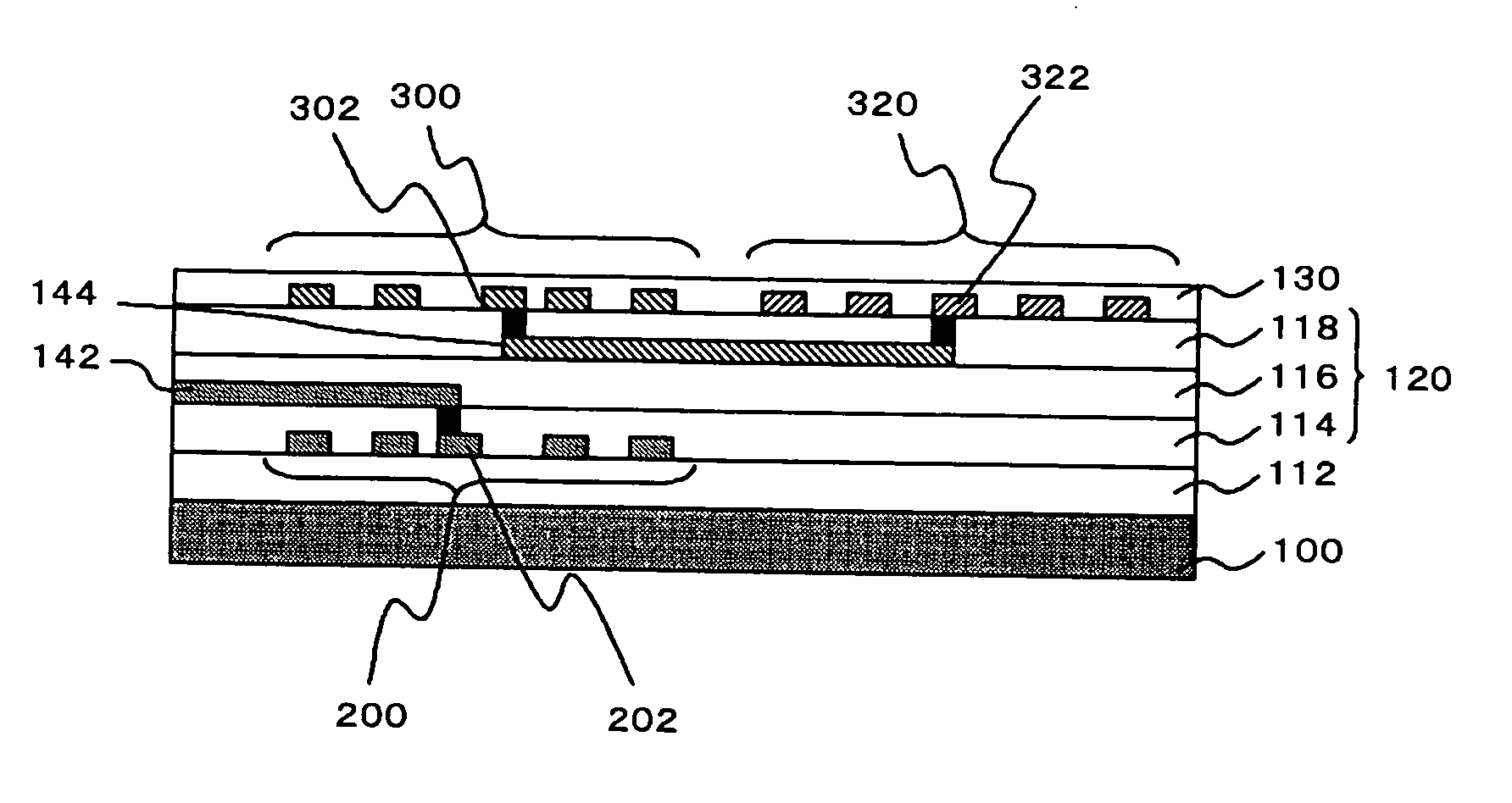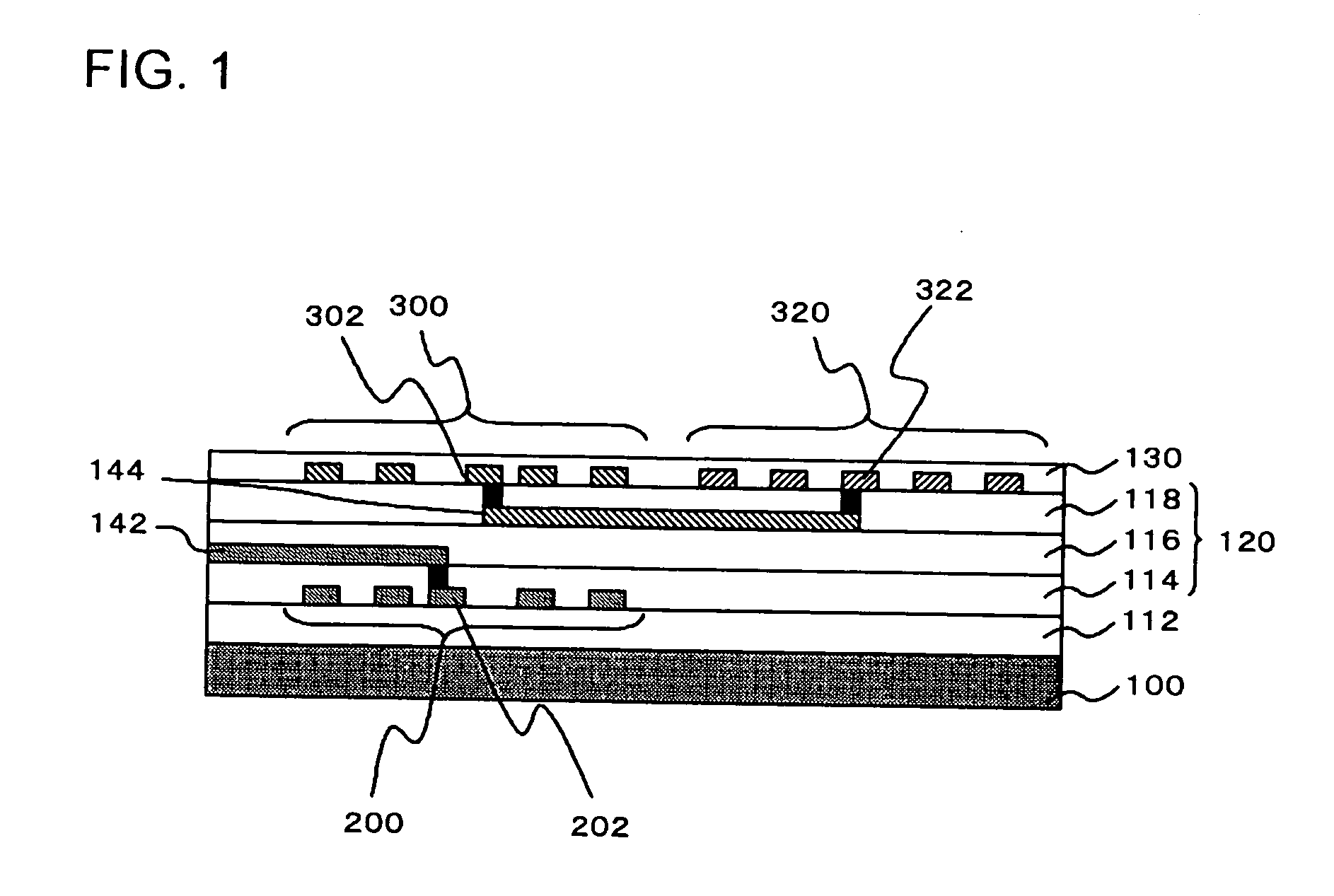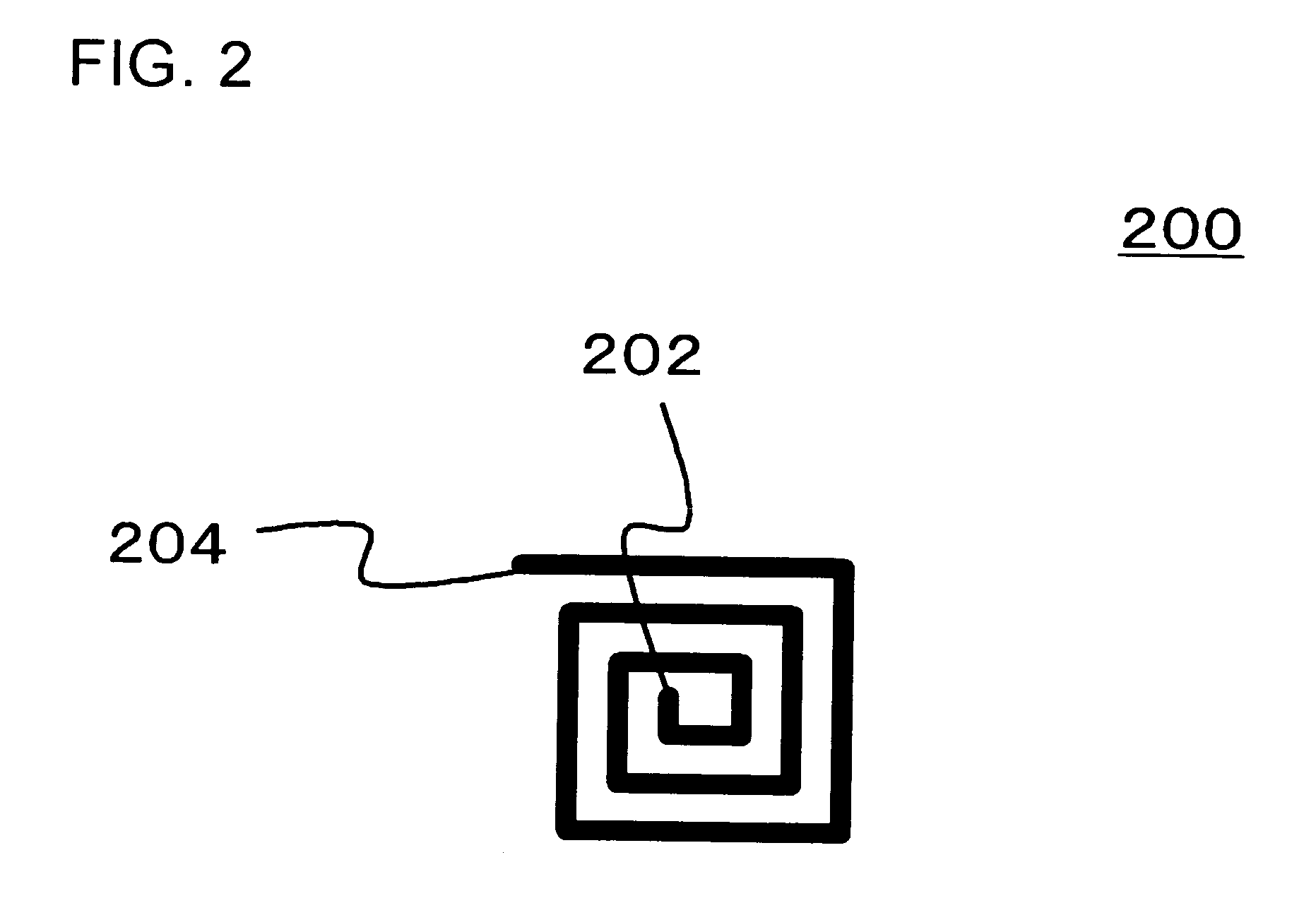Circuit Device
a circuit device and circuit technology, applied in the direction of semiconductor/solid-state device details, printed circuit non-printed electric components association, electrical apparatus construction details, etc., can solve the problems of photo couplers that cannot follow up electrical signals, photo couplers are difficult to be made smaller, and noise signals may be generated, so as to suppress the generation of noise signals and suppress the effect of noise signals
- Summary
- Abstract
- Description
- Claims
- Application Information
AI Technical Summary
Benefits of technology
Problems solved by technology
Method used
Image
Examples
first embodiment
[0042]FIG. 1 is a cross-sectional view showing a circuit device according to a The circuit device includes a first transmitting inductor 200, a first insulating layer 120, a first receiving inductor 300, and a second receiving inductor 320. The first transmitting inductor 200 is constituted of a helical conductive pattern, and receives an input of a transmitted signal. The first insulating layer 120 is provided over or under the first transmitting inductor 200. In the example shown in FIG. 1, the first insulating layer 120 is located over the first transmitting inductor 200. The first receiving inductor 300 is located in a region overlapping with the first transmitting inductor 200 through the first insulating layer 120. The first receiving inductor 300 is constituted of a helical conductive pattern, and generates a received signal corresponding to the transmitted signal input to the first transmitting inductor 200. The second receiving inductor 320 is connected in series to the fi...
fifth embodiment
[0075]FIGS. 8A and 8B are plan views each showing a shape of an inductor of a circuit device according to a In this embodiment the circuit device includes an even number of signal transmitting circuits including the first transmitting inductor 200, the second transmitting inductor 220, the first receiving inductor 300, and the second receiving inductor 320. Each of the signal transmitting circuits is disposed such that the same inductors are located adjacent to each other. Between the signal transmitting circuits, no other inductor is provided.
[0076]FIG. 8A is a plan view showing the shape of the first transmitting inductor 200 and the second transmitting inductor 220. All the first transmitting inductors 200 and the second transmitting inductors 220 are connected in parallel to the first escape routing 142 serving as the input line of the transmitted signal, and to the interconnect 230. The first transmitting inductors 200 adjacently disposed generate a magnetic field in the oppos...
fourth embodiment
[0078]This embodiment also provides the same advantageous effects as those offered by the Also, the first transmitting inductors 200 adjacently disposed generate the magnetic field in the opposite directions upon receipt of the transmitted signal, and the second transmitting inductors 220 adjacently disposed also generate the magnetic field in the opposite directions. Accordingly, the magnetic fields generated by the adjacently disposed first transmitting inductors 200 are coupled with each other, and those generated by the adjacently disposed second transmitting inductors 220 are also coupled with each other. Such arrangement further minimizes the leakage of the magnetic field, thereby facilitating the first receiving inductor 300 and the second receiving inductor 320 to receive the signal.
[0079]FIG. 9 is a cross-sectional view showing a circuit device according to a sixth embodiment. This circuit device has the same structure as that of the first embodiment, except that a third r...
PUM
 Login to View More
Login to View More Abstract
Description
Claims
Application Information
 Login to View More
Login to View More - R&D
- Intellectual Property
- Life Sciences
- Materials
- Tech Scout
- Unparalleled Data Quality
- Higher Quality Content
- 60% Fewer Hallucinations
Browse by: Latest US Patents, China's latest patents, Technical Efficacy Thesaurus, Application Domain, Technology Topic, Popular Technical Reports.
© 2025 PatSnap. All rights reserved.Legal|Privacy policy|Modern Slavery Act Transparency Statement|Sitemap|About US| Contact US: help@patsnap.com



